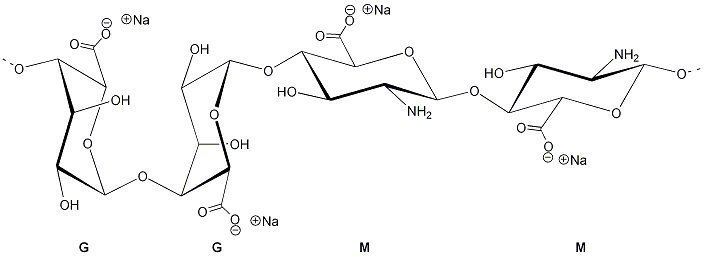 | ||
The edible water bottle is a blob-like water container made from sodium alginate gel. The biodegradable blob was created by Skipping Rocks Lab in an attempt to make a more environmentally friendly alternative to single-serving plastic bottles. The container, named "Ooho" by its creators, encloses a small volume of water in a membrane made from brown algae and calcium chloride. The manufacturing process is covered under a Creative Commons license, making the recipe freely distributed and readily available for anyone to use.
Contents
Traditional water containers
Over 50 billion single-use plastic water bottles made of polyethylene terephthalate (PET) are produced and discarded in the United States each year. According to the National Association for PET Container Resources, the recycling rate for PET has held steady at 31% since 2013. That equates to more than 4 billion pounds of unrecycled PET bottles in landfills, on roadsides and beaches, or in rivers and oceans. The properties that make PET useful as a packaging material (stability and durability) also make it resistant to breaking down after its useful life is over.
Polyesters like PET can be broken down through hydrolytic degradation: the ester linkage is cut by a water molecule. The reaction proceeds differently in acidic or alkaline conditions, but works best at temperatures between 200 - 300 °C. Under environmental conditions the process is undetectably slow.
PET is considered to be essentially non-biodegradable, with plastic bottles estimated to take as long as 450 years to decompose. Because of this, other packaging materials are being sought.
Alternative container
The “Ooho” is a gelatinous, double-membrane sphere made by dropping ice into separate solutions of calcium salt and sodium alginate. The process, called spherification, is a technique patented by Unilever engineer William Peschardt in the 1940s. More recently the method was introduced into modernist cooking by Spanish chef Ferran Adrià. The process creates an edible, biodegradable capsule.
Calcium alginate gel
Alginates are the natural product of brown algae and have been used extensively in wound dressing, drug delivery and tissue engineering, as well as food applications. Sodium alginate is an unbranched copolymer of 1,4-linked-β-d-mannuronate (M) and α-l-guluronate (G) sugars.
Sodium alginate (NaAlg) coagulates when exposed to calcium chloride (CaCl2) and forms calcium alginate (CaAlg2 ) and sodium chloride (NaCl), according to the following reaction:
2NaAlg + CaCl2 --> CaAlg2 + 2NaCl
Safety and biodegradability
The biocompatibility of alginate gels has been studied extensively and their safety for consumption is well established. As natural polysaccharides resistant to breakdown by human digestive enzymes, alginates are classified as dietary fiber. Although undigested if eaten, the Ooho capsule will gradually decompose as the calcium diffuses out of the gel matrix in the reverse of the reaction above.
CaAlg2 + 2NaCl --> 2NaAlg + CaCl2
Because it is a single-strand polymer, alginate can be depolymerized (broken into smaller units) by a variety of chemical reactions. Both acid and alkaline mechanisms can break down the linkages between the mannuronate (M) and guluronate (G) monomers. Free radical oxidation is another way the alginate can be degraded in the environment. Many bacterial species produce an enzyme (alginate lyase) which can break the molecule down into single sugar components, which can act as an energy source for the organism.
Using the edible water bottle
Currently the edible water container is not available commercially, although the developers are working to bring it to market. Prototypes have been tested in several markets in Europe. Major challenges remain before the Ooho is marketed to the public The membrane is thin, and not strong enough to withstand shipping and handling on a large scale. Drinking from it can be difficult because of its amorphous shape and lack of rigidity. Because the recipe is available through a Creative Commons license, the containers can be made by anyone who obtains the ingredients. The cost per container is less than 2 cents each.
